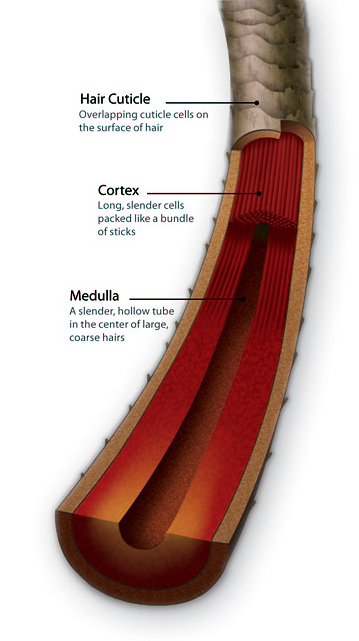Update: 17 April 2024
About (us)
Our foster volunteer experience for the Chequamegon Humane Association was interesting. We became another "foster fail" statistic by falling in love with Coco (the momma). Coco gave birth to 13 adorable puppies (we kept one, Mocha). And there were at least 5 different fathers.

Above: Julie hearding puppies (to their morning breakfast feast). Below: The puppy's traditional after breakfast nap.

More puppy stuff at Julie's FB page (videos etc.)
- For information about Julie's professional healthcare credentials, please see healthelite.org
About Tissue Mineral Analysis (hTMA)
hTMA (hair Tissue Mineral Analysis) lab data provides clinicians with reliable information about current state of health, and identifies trends towards disease (predictive medicine). Because it is accurate, non-invasive, and cost efficient, hTMA is used by health agencies worldwide for toxicological biomonitoring.

A hair tissue mineral analysis (hTMA) is considered a standard test used around the world for the biological monitoring of trace elements and toxic metals in human and animal species. hTMA uses the same analytical technology as is used for soil testing and testing of rock samples to detect mineral levels. Hair is one of the defining characteristics of mammals. Like other body tissues, it contains minerals that are deposited as the hair grows. Hair growth begins inside the hair follicle. The only ‘living’ portion of the hair is found in the follicle. The hair that is visible is the hair shaft, which exhibits no biochemical activity and is considered ‘dead.’ The mineral composition within the cortex remain intact (indefinitely) as the hair continues to grow out. A one to 1-½" long sample of hair cut close to the skin provides information about the mineral activity in the hair that took place over the past three to four months, depending on the rate of hair growth.
Soil scientists have understood the importance trace minerals play in plant health for 100 years. Forensic anthropologists use hair analysis extensively in understanding the diet and environmental conditions of animals dating back to prehistoric times. Although the DNA analysis of animal hair dates from the early 1990s2, the monitoring of rare North American carnivores via non-invasively collected samples began more recently with the analysis of mitochondrial DNA to identify different species. For example, several studies done in 19973 discussed reliable and inexpensive methods for identifying many species based on universal DNA primers4 from scats5 and hair6. The use of non-invasive hair collection methods to survey wildlife has expanded rapidly since the mid-1990s. Studies of high-profile, rare, and elusive species such as grizzly bears7, American black bears8, Canada lynx9, and American martens10 were among the first to exploit DNA-based hairsnaring techniques in North America, and have generated the bulk of literature available in this field. Hair sampling is now common and has expanded to include numerous other species.11
The science of hTMA is based on the application of an assessment protocol which uses a non-invasive tissue biopsy (hair sample) for obtaining an accurate biochemical history, and toxicological information. The hTMA data is used to direct a corrective nutritional supplementation prescription and diet recommendations that are designed to re-balance unhealthy mineral ratios and levels. In addition, nutritional balancing helps to eliminate toxic elements from the body tissues by providing preferred minerals, allowing the toxic elements to be released and removed. hTMA has been in use for more than 40 years in academic research, and applied clinically for both people and animals. Over 5,000 canine hair samples have been analyzed providing healthy baseline reference ranges for mineral levels and ratios. The research has proven the efficacy of using hTMA for; balancing homeostatic systems, fortifying immune function, removing toxins, restoring health, and improving performance.
TopReferences
- Jenkins, D. (1980). Biological Monitoring of Toxic Trace Metals - Vol. II, Toxic Trace Metals in Plants and Animals of the World - part I. (EPA600380090). Environmental Protection Agency, Washington, D.C..
- Morin and Woodruff, 1992
- Foran et al. 1997a, b; Paxinos et al. 1997. Foran et al. (1997a, b).
- Kocher et al. 1989.
- Foran et al. 1997a.
- Foran, et al. 1997b.
- Ursus arctos; Woods et al. 1999; Poole et al. 2001; Boulanger et al 2002; Paetkau 2003.
- U. americanus; Boersen et al. 2003.
- Lynx canadensis; McDaniel et al. 2000; J. Weaver, Wildlife Conservation Society, pers. comm.
- Martes americana; Foran et al. 1997b; Mowat and Paetkau 2002.
- Noninvasive Survey Methods for Carnivores, Robert A. Long (Editor), Paula MacKay (Editor), Justina Ray (Editor), William Zielinski (Editor). Publication Date: May 30, 2008 | ISBN-10: 159726119X | ISBN-13: 978-1597261197